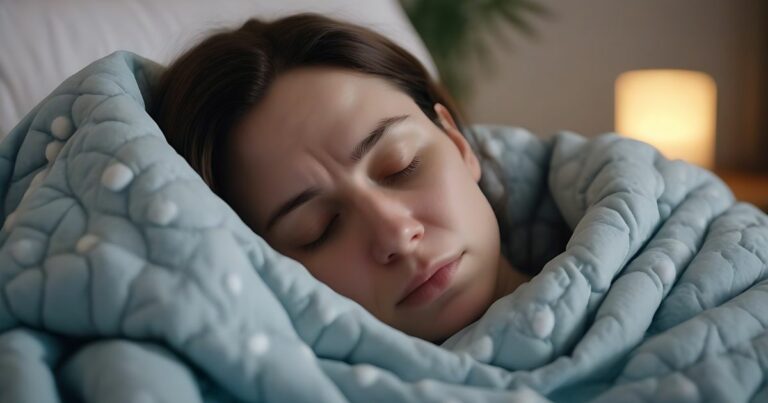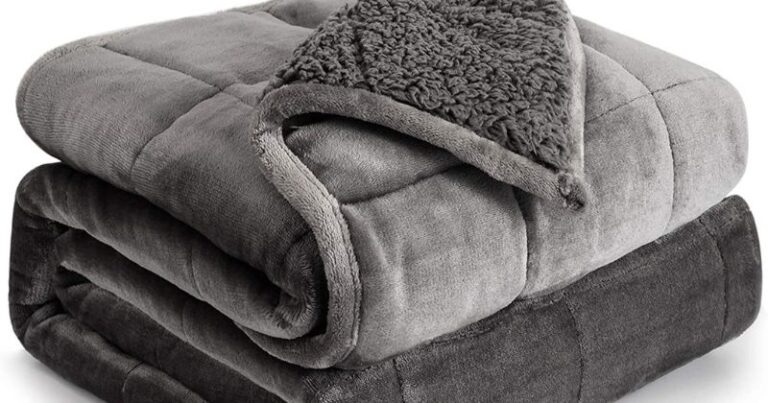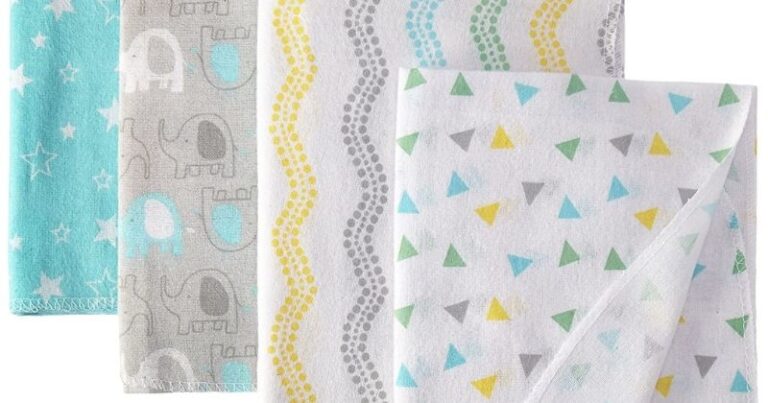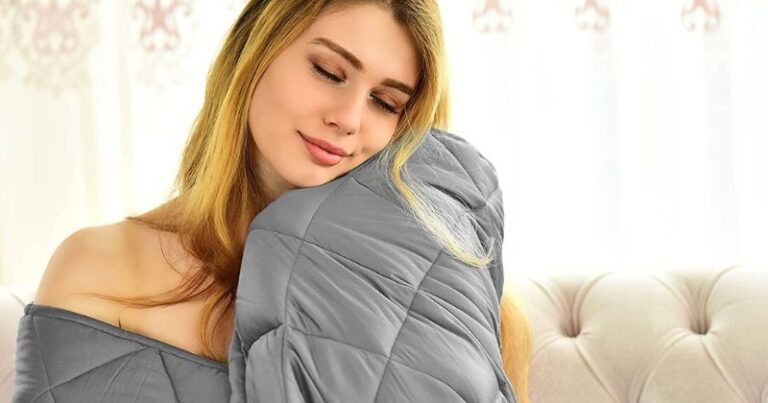As someone who has personally experienced the debilitating effects of Post-Traumatic Stress Disorder (PTSD), I understand all too well the relentless grip it can have on one’s life. Sleepless nights haunted by vivid memories, constant anxiety, and a persistent sense of unease become an unfortunate norm. However, amidst the chaos of managing PTSD, I stumbled upon a remarkable solution that has provided me with a semblance of peace and comfort: weighted blankets.
These seemingly simple yet incredibly effective blankets have revolutionized my approach to managing my symptoms, offering a tangible sense of security and calmness that I never thought possible. In this exploration, I delve into the transformative power of weighted blankets for PTSD sufferers, shedding light on their therapeutic benefits and how they can significantly improve the quality of life for those navigating the complexities of post-traumatic stress disorder.
In this article, I’ll explore the potential benefits of using weighted blankets for individuals with PTSD, including how they can aid in relaxation, reduce anxiety, improve sleep quality, and promote a sense of safety and security. Join us as we delve into the world of weighted blankets and their potential impact on individuals navigating the challenges of living with PTSD.
If you or someone you know is dealing with Post-Traumatic Stress Disorder (PTSD), you understand the challenges it can bring. The constant battle against anxiety, sleepless nights, and intrusive thoughts can take a toll on one’s well-being. In the quest to find effective therapies, an unconventional but promising solution has emerged – weighted blankets.
Understanding Post-Traumatic Stress Disorder (PTSD)

PTSD is a mental health condition that can occur after experiencing a traumatic event. Symptoms may include flashbacks, nightmares, severe anxiety, and emotional distress. Those living with PTSD often find it difficult to relax and experience restful sleep. Traditional therapies like medication and counseling have their merits, but what if there’s a more comfortable and natural solution?
This is a weighted blanket that I highly recommend
The Science Behind Weighted Blankets
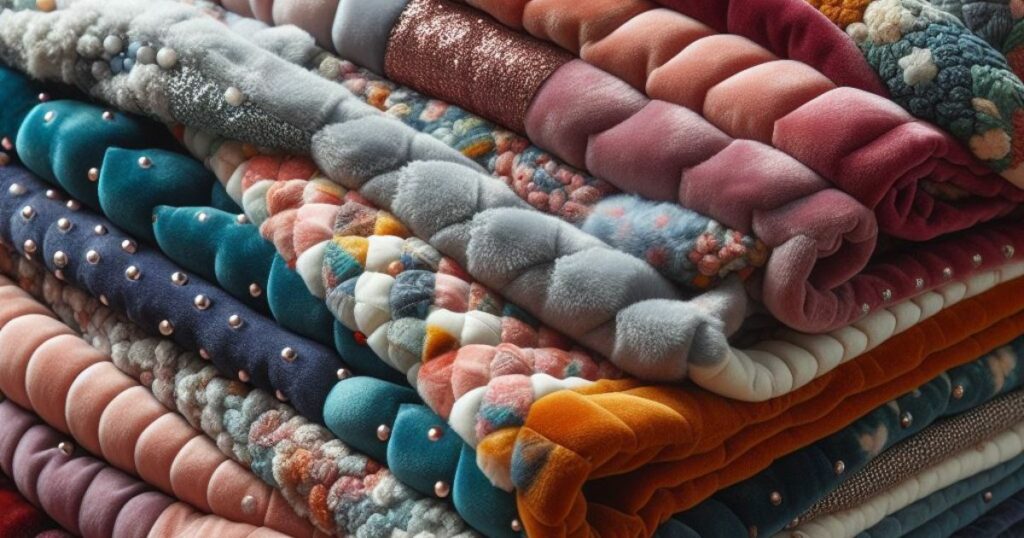
Weighted blankets operate on a fascinating principle known as Deep Touch Pressure (DTP). This therapy relies on gentle, even pressure distributed across the body, mimicking the sensation of being hugged or held. The science suggests that DTP can trigger the release of neurotransmitters like serotonin and dopamine, which are associated with feelings of calm and happiness.
How Weighted Blankets Work
These specialized blankets are designed to provide an even distribution of weight throughout the entire surface. The key to their effectiveness lies in the materials used within them, typically glass beads or poly-pellets. This evenly distributed weight exerts a soothing, cocoon-like pressure on the body, promoting relaxation and reducing stress.
Weighted blankets come in various sizes and weights, making it essential to choose the right one to experience their full therapeutic benefits.
Choosing the Right Weighted Blanket
Selecting the appropriate weight for your blanket is crucial. It’s recommended to choose a blanket that weighs around 10% of your body weight. For example, if you weigh 150 pounds, a 15-pound blanket should be ideal. This weight range has been backed by research and expert recommendations.
Benefits of Weighted Blankets for PTSD
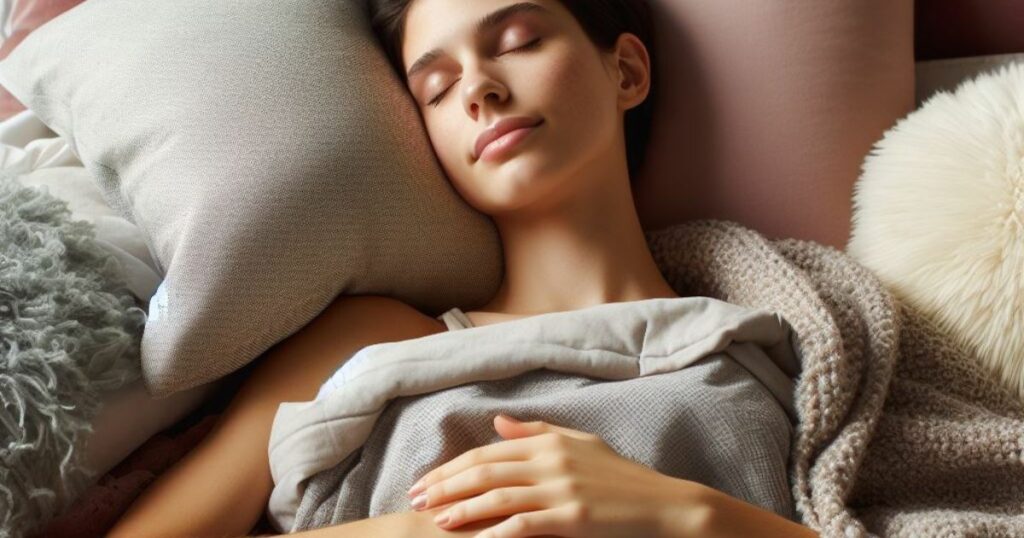
Now, let’s delve into the reasons why weighted blankets are gaining recognition as an effective therapy for PTSD:
- Reduced Anxiety: The deep pressure from the blanket can help calm the nervous system, reducing anxiety levels.
- Improved Sleep: Sleep disturbances are common among individuals with PTSD. Weighted blankets can promote better sleep quality by helping individuals fall asleep faster and stay asleep longer.
- Enhanced Comfort: The gentle, hugging sensation can provide a sense of security and comfort, especially during times of heightened anxiety.
- Minimized Nightmares: Many people with PTSD experience distressing nightmares. Weighted blankets may help in reducing the frequency and intensity of these nightmares.
- Non-Invasive: Unlike medications, which may have side effects, weighted blankets offer a non-invasive, drug-free approach to managing symptoms.
How to Use a Weighted Blanket for PTSD

Incorporating a weighted blanket into your daily routine is relatively simple:
- Lay It Flat: Spread the blanket evenly over your bed or couch.
- Get Comfortable: Lie down or sit beneath the blanket and allow it to drape over you.
- Relax and Breathe: Focus on your breath and relax your body as the gentle pressure does its work.
Comparing Weighted Blankets to Traditional Therapies
While traditional therapies like medication and counseling have their place in treating PTSD, weighted blankets offer a unique set of advantages. They provide a natural, non-invasive alternative that can be used alongside other treatments.
Potential Drawbacks and Precautions
It’s essential to address potential drawbacks and precautions:
Three Potential Drawbacks of Weighted Blankets:
- Heat Retention: Weighted blankets can trap heat and may lead to overheating, especially for individuals who are sensitive to temperature changes. This can be uncomfortable, especially in warmer climates or during hot seasons.
- Weight Sensitivity: While the added weight is beneficial for many people, some individuals may find it uncomfortable or even anxiety-inducing. People with certain sensory processing disorders or claustrophobia may not enjoy the feeling of being “trapped” under a heavy blanket.
- Weight Limitations: Weighted blankets are typically designed to be a certain percentage of a person’s body weight for effectiveness. This means they may not be suitable for individuals who are very small or large, as finding the right weight can be challenging.
Two Precautions to Take When Using Weighted Blankets:
- Consult with a Healthcare Professional: Before using a weighted blanket, especially for therapeutic purposes, it’s advisable to consult with a healthcare professional or occupational therapist. They can help determine if a weighted blanket is appropriate for your specific needs and recommend the right weight.
- Safety Guidelines: Always follow safety guidelines when using a weighted blanket. Ensure that it is properly distributed on the bed and does not cover the head or face, which can pose suffocation risks. It’s also important to regularly check the blanket for any wear and tear, as damaged blankets may no longer distribute weight evenly.
Exploring the Various Types of Weighted Blankets
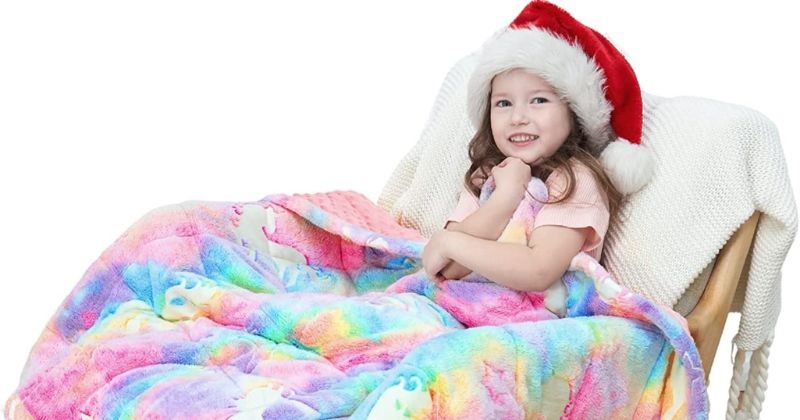
When considering a weighted blanket for PTSD therapy, it’s essential to explore the different types available in the market. Each type has its unique features and advantages, allowing you to tailor your choice to your specific needs.
1. Cotton Weighted Blankets
- Cotton weighted blankets are known for their breathability and natural feel.
- They are an excellent choice if you tend to get hot while sleeping.
2. Minky Weighted Blankets
- Minky fabric is incredibly soft and plush, providing a luxurious sensation.
- If you appreciate a cozy, warm feeling, a minky weighted blanket might be the perfect fit.
3. Cooling Weighted Blankets
- Designed with cooling materials like bamboo, these blankets are ideal for hot sleepers.
- They wick away moisture and regulate temperature, ensuring a comfortable night’s sleep.
4. Customizable Weighted Blankets
- Some manufacturers offer customization options, allowing you to choose the weight and fabric that suits your preferences.
- This personalization ensures you get a blanket that feels just right for you.
5. Weighted Blankets with Removable Covers
- Removable covers are convenient for easy cleaning and maintaining the freshness of your blanket.
How Weighted Blankets Promote Relaxation
Understanding how weighted blankets promote relaxation can help you appreciate their therapeutic potential fully. When you use a weighted blanket, here’s what happens:
- Enhanced Serotonin Production: The gentle pressure triggers the release of serotonin, often referred to as the “feel-good” hormone. This increase in serotonin can boost your mood and promote relaxation.
- Reduced Cortisol Levels: Cortisol is the stress hormone, and high levels of it can lead to anxiety. Using a weighted blanket can help lower cortisol levels, reducing anxiety and stress.
- Improved Sleep Quality: Sleep disturbances are common among individuals with PTSD. Weighted blankets help you fall asleep faster and experience deeper, more restorative sleep.
- Sensory Calming: The tactile sensation of the blanket can provide sensory calming, helping you focus and relax.
Making an Informed Decision

Before purchasing a weighted blanket for PTSD therapy, it’s crucial to consider a few factors:
- Quality: Invest in a high-quality, durable blanket that will withstand regular use.
- Size: Choose a blanket size that fits your bed or body comfortably.
- Weight: As mentioned earlier, select a weight that’s around 10% of your body weight for optimal effectiveness.
- Maintenance: Check if the blanket is easy to clean and maintain.
- Consultation: If you have any doubts or concerns, don’t hesitate to consult a healthcare professional or therapist for guidance.
FAQs About Weighted Blankets and PTSD
Can anyone use a weighted blanket for PTSD?
While many find relief with weighted blankets, it’s essential to consult a healthcare professional, especially if you have specific medical conditions.
Can children use weighted blankets for PTSD?
Yes, but the weight should be appropriate for their body size, and parental supervision is essential.
How do I clean a weighted blanket?
Check the manufacturer’s instructions, but many weighted blankets come with removable, machine-washable covers.
Weighted Blankets For Post-Traumatic Stress Disorder Conclusion
I find that weighted blankets are emerging as a valuable tool in managing the symptoms of PTSD. The science behind them, coupled with the real-life experiences of those who have benefited, makes them a compelling therapy option. If you or a loved one is seeking a non-invasive, drug-free approach to alleviate anxiety and improve sleep, I would suggest giving a weighted blanket a try.
For more information on home decor and comfort solutions, explore our sitbacklounge.com website. We’re dedicated to helping you create a cozy and stress-free living environment.
By following this comprehensive guide, you can embark on a path towards better sleep, reduced anxiety, and improved overall well-being, one snugly night’s sleep at a time. I love a good night’s sleep but who doesn’t?
With the therapeutic embrace of a weighted blanket, you can find solace, relaxation, and improved mental health—a small yet powerful addition to your journey toward healing.
Please leave any comments below and thanks for reading and passing this on to others!



